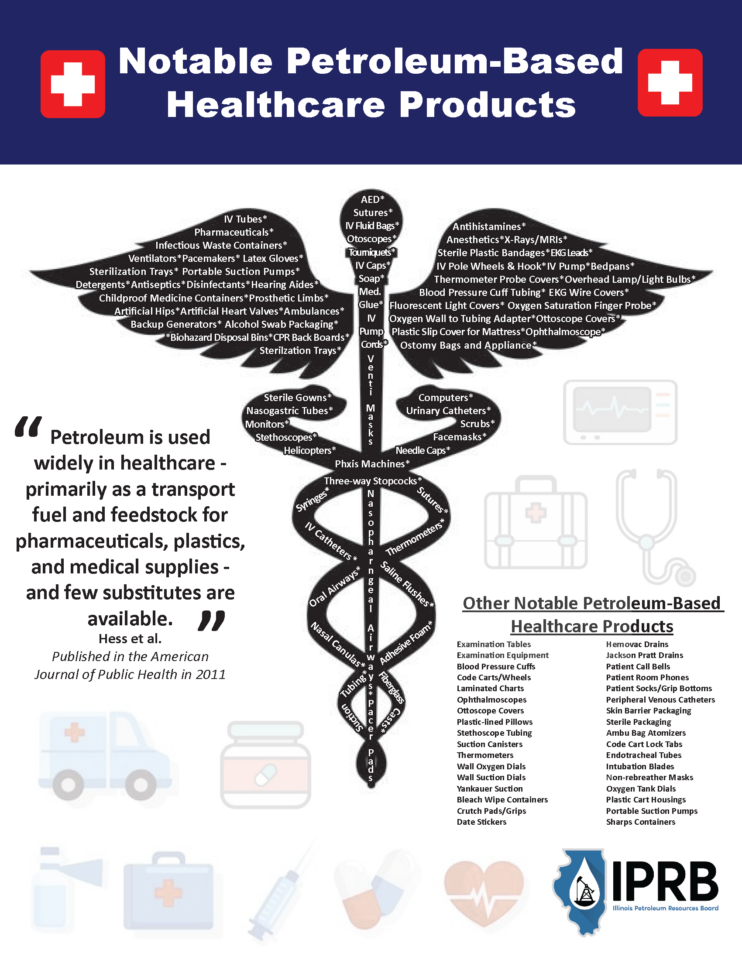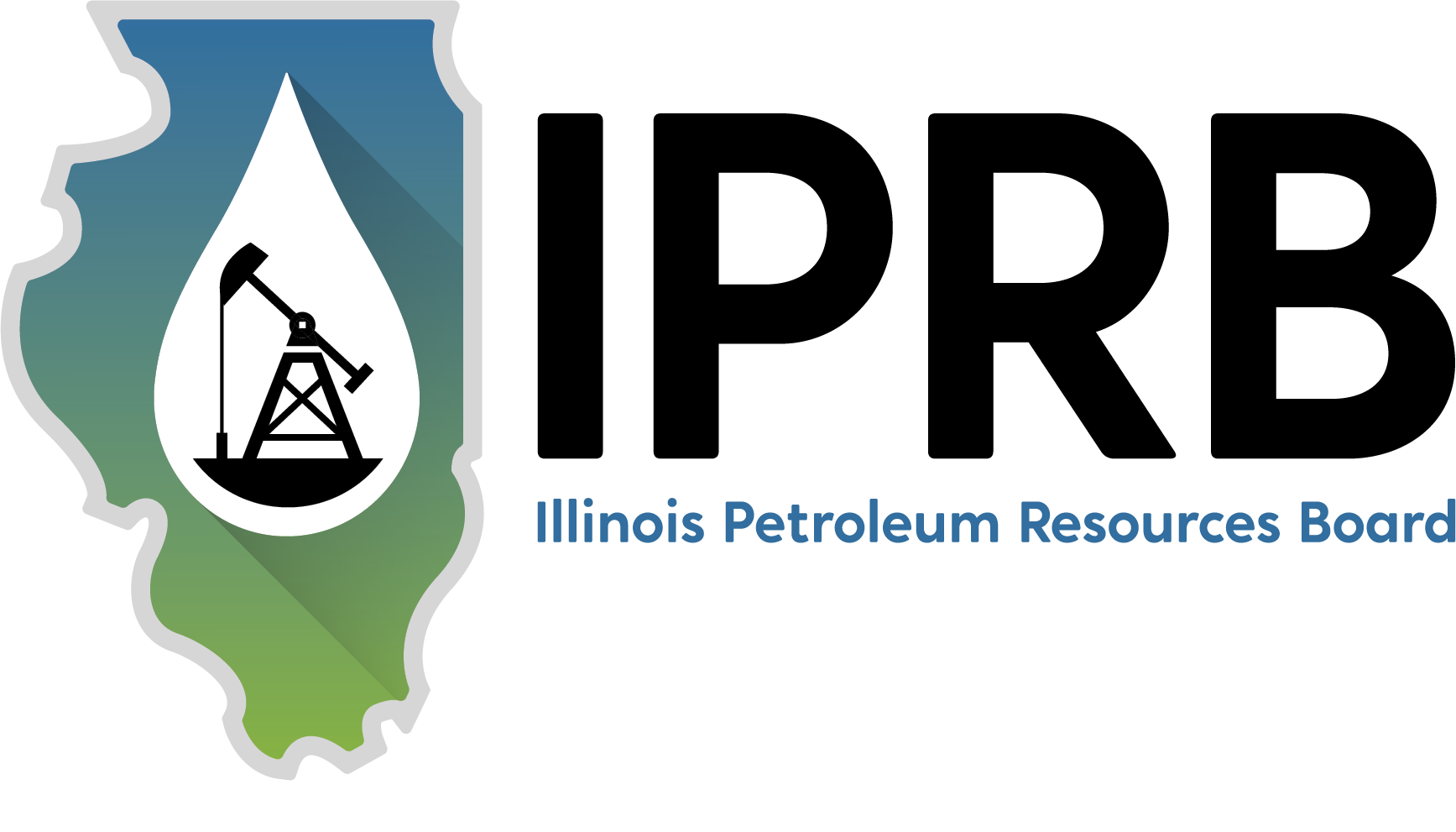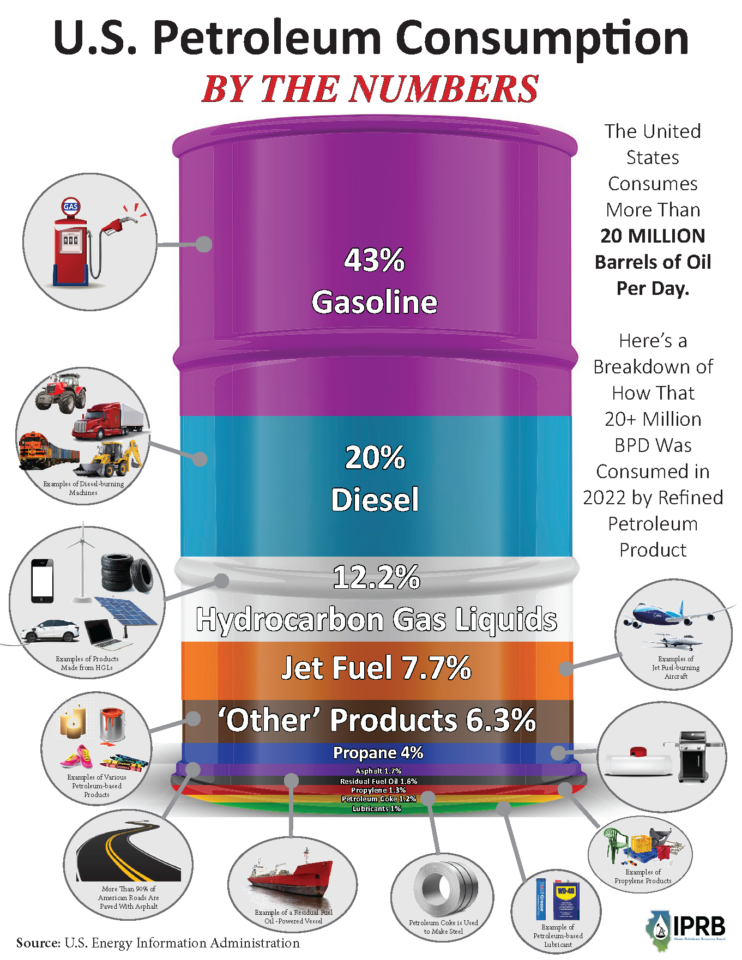Most folks think of transportation fuels when they think of crude oil, and probably heating or cooking when they think of natural gas. But petroleum – specifically crude oil, natural gas liquids and lease condensate – is used to make a whole lot more than gasoline.
In fact, 31 percent of U.S. petroleum use occurs outside of the transportation sector.
There are more than 6,000 everyday products refined from an/or manufactured with natural gas liquids and crude oil, including electronics, paint, cosmetics, synthetic fabrics and medicines. A 42-gallon barrel of crude oil is typically used to make 19.4 gallons of gasoline, roughly 11 gallons of diesel fuel and four gallons of jet fuel. The rest is used to make petrochemical feedstocks, waxes, lubricating oils, and asphalt, just to name a few.
 Hydrocarbon gas liquids (HGLs), which are removed from “wet” natural gas, are used as feedstocks to make chemicals and plastics, as well as asphalt and road oil used for construction and road maintenance. One of the most common natural gas liquids is ethane. Ethane is heated to 1,500 degrees at facilities known as “cracker” plants. The process “cracks” ethane into new molecules that create a substance known as ethylene. Ethylene is transported, most commonly by pipeline, to a different facility for a process known as polymerization. This process converts ethylene from a gaseous form to a resin, which can then be engineered and molded into plastic products.
Hydrocarbon gas liquids (HGLs), which are removed from “wet” natural gas, are used as feedstocks to make chemicals and plastics, as well as asphalt and road oil used for construction and road maintenance. One of the most common natural gas liquids is ethane. Ethane is heated to 1,500 degrees at facilities known as “cracker” plants. The process “cracks” ethane into new molecules that create a substance known as ethylene. Ethylene is transported, most commonly by pipeline, to a different facility for a process known as polymerization. This process converts ethylene from a gaseous form to a resin, which can then be engineered and molded into plastic products.
Americans use an average of 20 million barrels of petroleum products each day, and the average U.S. citizen uses three gallons of refined petroleum products a day. But not only are petroleum products widely used, they are absolutely essential. As the following Energy In Depth infographic illustrates, petroleum-based products –including artificial heart valves, pacemakers and various modern hospital equipment – are widely used in the healthcare industry to literally save lives.
 It has been estimated that the average emergency room has 90 products derived from petroleum and natural gas. Face masks, gloves, scrubs, IV tubes, sterilization trays, monitors and ventilators are all made of petroleum or include petroleum products, while 80-90 percent of pharmaceuticals are made of petroleum. Personal hygiene products such as soap, detergents, antiseptics and disinfectants used to keep healthcare facilities sanitary are all derived from oil and natural gas.
It has been estimated that the average emergency room has 90 products derived from petroleum and natural gas. Face masks, gloves, scrubs, IV tubes, sterilization trays, monitors and ventilators are all made of petroleum or include petroleum products, while 80-90 percent of pharmaceuticals are made of petroleum. Personal hygiene products such as soap, detergents, antiseptics and disinfectants used to keep healthcare facilities sanitary are all derived from oil and natural gas.
A longtime Southern Illinois nurse recently sat down with IPRB to talk about how important petroleum-based products are to providing quality healthcare.
And although “Keep It In the Ground” groups claim solar panels, wind turbines and electric cars will soon make oil obsolete – in reality, none of those things would even be possible without petroleum! More than 70 percent of an electric car is made from petrochemicals. The United States Geological survey also estimates that 11-16 percent of wind turbines are resin, plastic or fiberglass. Oil is also used to lubricate wind turbines. Solar panels include ethylene, polyester, polyurethane and polyisobtylene-based components.
As the International Energy Agency noted in 2018, “Petrochemicals are particularly important given how prevalent they are in everyday products. They are also required to manufacture many parts of the modern energy system, including solar panels, wind turbines, batteries, thermal insulation and electric vehicles.”
These are just a few reasons why the “Keep It In the Ground” movement’s claims that we can do away with the oil and natural gas industry is so incredibly inaccurate. Check out the following IPRB video to find out why we are going to need a lot of oil for many decades to come.
Illinois Oil Industry Statistics
14,000+
JOBS
$330MM
ANNUAL STATE TAX REVENUE
$3.05B

